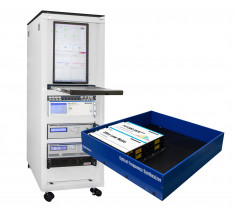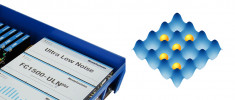Timing distribution for large facilities
The synchronization of remote events with femtosecond precision in large-scale facilities requires a complex interplay of frequency stabilization and fiber length delay compensation. This is achieved by using a mode-locked laser serving as an optical master oscillator which is synchronized to a low-noise rf reference. The laser output is amplified, split into the various client channels, and distributed via stabilized fiber links to the remote clients across the facility. There it can be used for synchronization of pulsed lasers or microwave signals. This technique insures highly stable timing distribution for free electron lasers, radio telescope arrays, laser amplifier chains, particle accelerators, femtosecond electron diffraction experiments and other applications of a similar scale.

Your direct line to our expert: Dr. Christian Mauser


